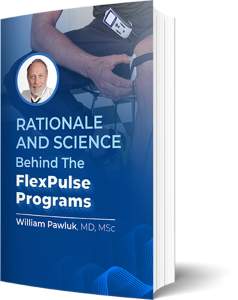Gamma waves (gamma brain oscillations – GBOs) have recently been under a lot of investigation by neuroscientists. In addition to Beta, Alpha, Theta, and Delta brainwave patterns, gamma waves are essential for optimal brain function. But what exactly are Gamma waves?
These are specific patterns depicting the electrical activity in the brain occurring at frequencies between 30-100 Hz. However, it is at the 40 Hz frequency point that is most interesting. For a long time, the term Gamma has been used to refer to the oscillations of brain activity higher than 30 Hz and frequencies that typically range from 30 Hz to 80 Hz. Just recently, frequencies between 80 Hz and 200 Hz have been labeled “high-gamma.” Both Gamma and high-gamma activity tend to happen simultaneously in the brain.

Gamma Waves Impact on Cognition
Gamma waves are helpful when processing high-level information in various brain parts. These high-level tasks mainly deal with cognitive functioning, memory, learning, and information processing by the brain. Gamma waves are linked to memory formation, sensory perception, and voluntary movement. However, the gamma waves need to be at an optimal range for one to enjoy better/ improved focus, adequate attention, cognition, sensory processing, learning, information processing, REM sleep, and perception.
Note that when the gamma activities are too low or too high, there is a possibility of specific problems developing. For instance, too little gamma activity may trigger issues such as depression, ADHD, and learning disabilities. On the other hand, an excess of gamma activity can trigger anxiety, hyper arousal, and stress.
Slow brain activity is often linked to low-frequency brainwaves. Improper integration of large neuron areas in the brain can also trigger memory loss and cognitive impairment. While cognitive function is a complex phenomenon, it needs to be adequate to maintain good memory and attention.
It is also essential for grouping constantly changing processes and thoughts. What’s more, proper integration is needed for awareness as it helps the brain make sense of what comes in as input. Interaction is essential, and so is gamma activity since this facilitates integration.
With the constant external sensory input, a competition among neural reaction events often ensues for perception and representation. Therefore, the brain needs to select and process vital information to utilize its processing resources. Usually, Gamma oscillations get stimulated by the sensory input, which ranges from 40 Hz to 100 Hz, which helps in processing sensory information.
Gamma rhythms are always widespread when one is awake and dreaming. Magneto-encephalograms (MEGs) – sensitive brain magnetic activity recordings show that the rhythms could engulf the whole brain and bind multiple perceptions into one cognitive experience.
Pulsed Electromagnetic Field (PEMF) Impact on Gamma Production
Magnetic field therapy helps synchronize neuron firing in the brain as long as it is at the appropriate frequency. Synchronization is a necessity as it is needed in integrating nerve signals and neuroplasticity. Additionally, amounts of gamma production and synchronization of signals impact one’s attention—the higher the gamma production and better synchronization, the stronger the attention level.
At the bottom of the brain’s front, one’s basal forebrain offers important input for gamma activity and attention. Acetylcholine is produced in the basal forebrain. It is a vital component for controlling behavior and is essential to memory. You can tell that this area has been damaged in cases of dementia linked with Alzheimer’s disease and Parkinson’s disease. Magnetic therapy stimulation over the temples increases gamma activity in this area—consequently, people struggling with focus and memory challenges benefit.
Therefore, it is essential to apply targeted brain stimulation to create entrainment. This refers to a natural brainwaves synchronization of brainwaves. According to research findings, entrainment becomes more noticeable during gamma stimulation than other frequency brainwave patterns happening in the thalamus. This means that entrainment with gamma frequencies appears to be a lot easier than entrainment with different brainwave frequencies.
Differentiating PEMF Therapy and Other Entrainment Stimuli
There are numerous stimuli used for entrainment, including audiovisual, sound, pulsing lights, and transcranial electrical stimulation. However, PEMF, a different kind of stimulation, is preferred over most other entrainment stimuli because it is safe, offers targeted approaches to the brain areas, and can also penetrate the entire brain. Besides these primary gains, PEMF also provides benefits such as reducing inflammation, reducing Alzheimer’s plaque development, increasing ATP, increasing circulation, and stimulating neural stem cells and neurotransmitters. All these benefits enhance the use of PEMF therapy for entrainment.
How it also works is quite different. PEMFs pass through the whole brain, striking differences from other techniques. In most cases, alternative entrainment methods are absorbed by the brain. This could easily trigger adverse heating effects. These methods also have an indirect impact as they interact with the body’s nervous system, achieving results. However, PEMFs tend to be a bit more directly controlled. The brain activity, in this case, is more targeted, a phenomenon that often leads to secondary gains.
PEMF Therapy and Entrainment Device
The G2 is a PEMF device invented by FlexPulse. It comes with four new programs, all geared towards brain stimulation. While this program’s primary benefit and emphasis is neural stimulation, the pulsed electromagnetic field frequencies also offer full range advantages that any PEMF machine provides.
This includes increased energy production, healing, and balance. The program range on this device allows one to choose the most appropriate frequency for the anticipated effect on the specific brainwave frequency band. The frequencies have been carefully chosen based on the impact of the brainwave frequency bands needed for entrainment. The FlexPulse system took three decades of research and lots of study before it became a reality. This explains its efficacy and minimal side effects, if any.
You need 30 minutes of entrainment before sleeping, but you can also safely use it in your sleep over the night. It offers an easy treatment option whenever someone is. This device can be used by more than one person and may work for different conditions one is treating, thanks to the wide range of installed programs.

